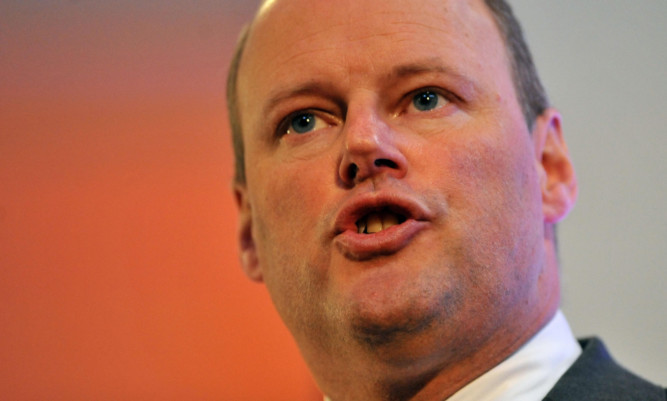Royal Bank of Scotland is today expected to announce 2,000 job losses in the wake of boss Stephen Hester’s plans to stand down after five years at the helm.
The cuts are expected to be spread around the bank’s offices across the world, but it is feared some workers in the City will lose their jobs as the global investment arm is decreased from 11,000 to 9,000.
Mr Hester will leave later this year and will receive 12 months’ pay and benefits worth £1.6 million and the potential for a £4 million shares windfall from a long-term incentive scheme. But he will receive no bonus for 2013.
He said: “We are now in a position where the Government can begin to prepare for privatising RBS. While leading that process would be the end of an incredible chapter for me, ideally for the company it should be led by someone at the beginning of their journey.”
Chancellor George Osborne said Mr Hester should be commended for “having brought RBS back from the brink” following its taxpayer bailout at the height of the financial crisis.
He said: “When Stephen Hester took on the job at RBS in 2008 it was a bust bank with a broken culture and posed a huge risk to financial stability.
“RBS today is safer, stronger and better able to support its customers. I want to commend Stephen Hester for everything he has done to make this turnaround possible.”
He added Mr Hester had “made an important contribution to Britain’s recovery from the financial crisis”.
But former city minister Lord Myners said the RBS board had been “doing the bidding” of the Chancellor.
He told BBC 2’s Newsnight: “I think the pressure that the Government, Treasury, were imposing on the board of RBS made Stephen Hester’s position close to impossible.
“He’s made it very clear he didn’t really want to go now. He’s going because the board has said he should go and I think they are doing the bidding of George Osborne.
“George Osborne has been increasingly at odds with Stephen Hester over the management of this bank.”
Mr Hester told reporters it had been the board’s choice for him to make way for someone new to lead the bank through privatisation and that he had been prepared to carry on.
He said he was “co-operating amicably and will stick around as long as they need me” before going on holiday.
But he also admitted having “some human regrets” about not completing the bank’s transition back to private markets.
“I have been pretty clear that I suppose I feel torn about this – I feel a sense of loyalty to the company and I want to do what is right for the company.
“If that was to lead the company through privatisation, I wanted to do that.”
RBS has launched a search for his successor immediately.
Mr Hester will continue in his role until December, unless a successor is in post before then.
The decision comes amid mounting speculation over Government plans for RBS, which is 81% owned by the state.
A high-powered commission of MPs and Lords are reportedly set to recommend that the bank is split into a good bank and a bad bank.
A draft copy of a report from the Parliamentary Commission on Banking Standards is believed to suggest breaking up the taxpayer-backed lender.
But RBS itself has claimed it is well on the road to recovery, despite reporting losses of £5.2 billion for 2012, driven by a £390 million settlement for rate-fixing, £1.1 billion provision for mis-selling and IT glitches.
Mr Hester said: “It has been nearly five years since I joined RBS after the bank was rescued by the Government.
“In that time we have reduced the bank’s balance sheet by nearly a trillion pounds, repaid hundreds of millions of taxpayer support, and removed the imminent threat that this bank’s size and complexity posed to the UK economy.”
Philip Hampton, chairman of RBS, praised Mr Hester’s leadership of the bank and said he would be leaving it in a “vastly improved position that many would have thought impossible five years ago.
“In the midst of a major crisis, he accepted the challenge of stabilising the bank, turning it around, and putting us in a position where we can begin to plan for returning the organisation to the private sector. His achievements have been considerable.
“We will continue Stephen’s work to remove the barriers to privatisation over the next year and continue to do everything possible to support the British economy. ”
Sir Philip added that the board had been thinking about succession for a while.
The process accelerated in recent weeks as it became apparent Government had a desire for RBS to be privatised towards the end of 2014, he said.
Mr Osborne confirmed he would “shortly” set out plans for RBS following the imminent publication of the Parliamentary Commission on Banking’s report and said he would use his Mansion House speech next week to outline further reforms.
“Having brought RBS back from the brink, now is the time to move on from the rescue phase to focus on RBS being a UK bank that provides greater support to the British economy, helping businesses and job creation here, and which can return to the private sector in a way that ensures value for the taxpayer,” he said.
